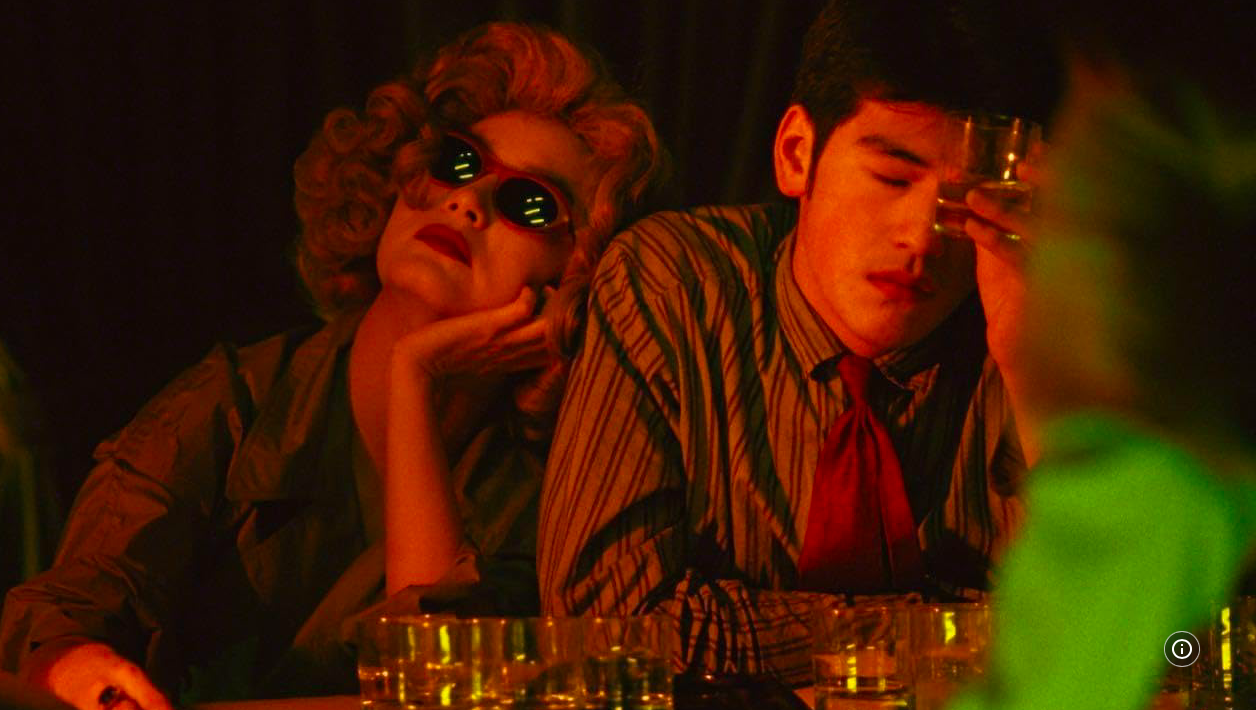OTC Rating : 5/5
Introduction
Wong Kar-wai’s Chungking Express is not your typical romantic drama. It’s messy, dreamy, and full of longing. Set in the neon-lit, ever-moving world of 1990s Hong Kong, the film tells two separate but emotionally connected stories of love, heartbreak, and the quiet moments in between. Through its bold style, spontaneous storytelling, and deeply human characters, Chungking Express captures what it feels like to be lonely in a crowd.
Story & Narrative
The film is split into two parts, both centered around policemen dealing with lost love.
In the first story, Police Officer 223 (Takeshi Kaneshiro) is heartbroken after a breakup. He becomes obsessed with canned pineapples that expire on May 1st—his personal deadline for getting over his ex. He crosses paths with a mysterious woman in a blonde wig (Brigitte Lin), who is involved in the criminal underworld.
In the second story, Police Officer 663 (Tony Leung) is also dealing with heartbreak. A quirky fast-food worker, Faye (Faye Wong), develops a silent crush on him and secretly sneaks into his apartment to clean, decorate, and slowly become part of his life—without him even realizing it.
Both stories explore how people try to move on from love and how small moments can create unexpected emotional connections.
Image courtesy : IMDB
Direction
Wong Kar-wai directs with instinct rather than structure. The film feels alive, full of spontaneity and emotion. Instead of following a strict plot, he lets scenes breathe, giving time to glances, silences, or even a character talking to a bar of soap. Wong creates a world that feels intimate yet chaotic, where loneliness is shared silently in crowded places.
His bold choice to break the story into two separate narratives—linked only by the same snack bar—adds a feeling of fragmentation, much like real-life relationships that come and go without warning.
Cinematography
The cinematography by Christopher Doyle and Andrew Lau is iconic. Handheld shots, slow motion, fast motion, blurred images, neon reflections—everything feels like a visual diary of urban emotions. The camera moves like a person who’s slightly drunk on love and city lights. The use of step printing (a technique that gives scenes a jittery, dreamy motion) in the chase scenes and emotional moments creates a feeling of time slipping away.
The color palette is vivid—yellows, reds, greens—and full of textures from street markets, apartment windows, and flickering signs. Every frame feels like a memory.
Performances
- Takeshi Kaneshiro brings humor and vulnerability to his role as a heartbroken man trying to distract himself in odd ways. He’s goofy but relatable.
- Brigitte Lin is magnetic and mysterious, even behind dark glasses and a wig. She carries a mix of danger and sadness.
- Tony Leung gives a quiet, deeply internal performance. His face shows how much he’s holding inside, especially when he talks to his furniture or stands still in a crowd.
- Faye Wong is the heart of the film. Her playful energy, wide-eyed curiosity, and silent devotion make her scenes unforgettable. She feels like a dream invading someone else’s routine.
Image courtesy : IMDB
Production & Art Design
The film’s locations are as important as its characters. The tight, cluttered interiors of apartments and shops reflect the crowded emotional spaces the characters live in. The snack bar, the narrow staircases, and cramped rooms are full of texture and life.
Production design doesn’t aim for perfection—it aims for feeling. Things look lived-in, slightly messy, and very real.
Sound Design
Sound is subtle but meaningful. The city buzzes in the background—traffic, radios, clinking dishes. These sounds build the world without overwhelming it. Wong often uses silence, too, especially in moments of longing or change, to let us sink into the character’s state of mind.
Image courtesy : IMDB
Editing
The editing by William Chang is fast, emotional, and sometimes jarring—but on purpose. The film doesn’t aim to tell a story in a linear or “smooth” way. It wants to show how emotions hit in waves. Jump cuts, overlapping shots, and abrupt transitions help us feel the chaos of urban life and inner feelings. The editing in scenes where Faye enters the apartment repeatedly feels like watching time melt and repeat.
Music & BGM
The film’s soundtrack is unforgettable. The repeated use of “California Dreamin’” by The Mamas & the Papasbecomes Faye’s emotional theme. It starts playful and becomes more melancholic as her feelings deepen.
Another iconic track is Faye Wong’s Cantonese cover of The Cranberries’ “Dreams”, which mirrors her emotional journey.
The background score is minimal but fits perfectly—light piano or strings that underline moments of silence or reflection. The music choices are emotional cues that stay with you long after the film ends.
Conclusion
Chungking Express is not a film for everyone—but for those who connect with it, it becomes deeply personal. It’s about how people deal with being left behind, how they carry love in odd ways, and how they find new hope in quiet places. Technically bold and emotionally tender, this film proves that love stories don’t need grand gestures—sometimes, all it takes is a quiet song and a bowl of chef’s salad.
Why You Should Watch It:
- A masterclass in mood-driven storytelling by Wong Kar-wai
- Unique cinematography that feels like poetry
- Powerful performances, especially from Faye Wong and Tony Leung
- An iconic soundtrack that perfectly matches the film’s emotional beat
- A beautiful exploration of loneliness, love, and silent connections

